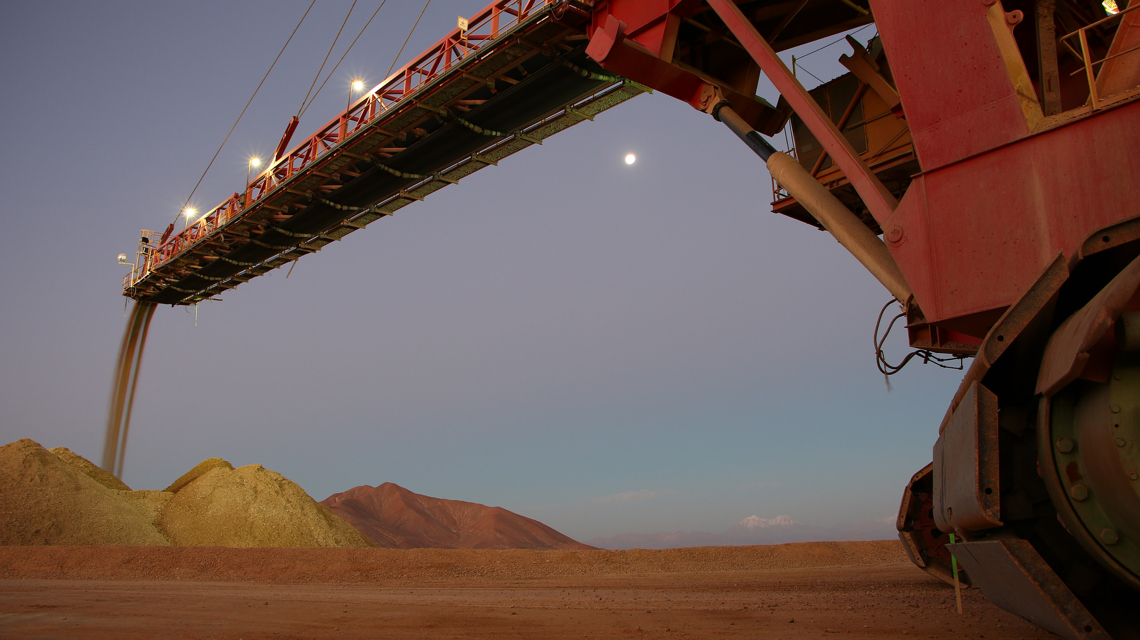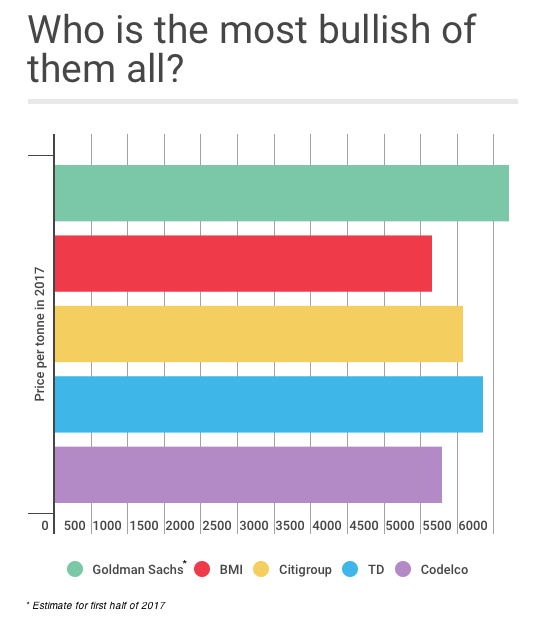Copper to be best performing commodity of 2017 — analysts

Radomiro Tomic copper mine in Chile. (Image courtesy of Codelco via Flickr)
Copper, until recently one of the worst performing commodities of the past two years, experienced a sudden spike at the end of 2016, posing several questions as to the direction of the market as we move into 2017.
The rally, which began on the heels of Donald Trump winning in the US presidential election, has been partly based on speculation regarding the impact of the President-elect’s $500 billion infrastructure plans on demand for the metal.
It has also been fuelled by a pick-up in Chinese imports, responsible for almost 50% of global copper demand, which is seen a good omen for the industry’s health.
Even Goldman Sachs — usually the most pessimistic when it comes to forecasting what’s in stake for copper in the short term — has changed its tone to a more positive one.
The investment bank now believes that increased demand from China will leave the market tighter than previously expected, which will support a more “bullish” environment for the metal at least to mid-2017.
“Although it is tempting to blame this on speculative positioning, the materially stronger fundamental developments that contributed to this surge in speculative interest are likely to underpin a more bullish environment for copper,” Goldman analysts wrote in early December.
Increased demand from China will leave the market tighter than previously expected, which supports a more “bullish” environment for copper at least to mid-2017.
They predict prices to hit $6,200 a tonne over the next six months and has lifted its 3, 6 and 12-month forecasts to $5,800, $6,200 and $5,600 a tonne, respectively from $5,000, $4,800 and $4,800.
Molly Shutt, commodities analyst at BMI Research, is also positive on the outlook for copper. She expects the global market to shift into a slight deficit by 2019, a bit sooner than previously anticipated, as steady demand growth is expected to outpace decelerating production growth.
BMI attributes the slowing supply growth outlook primarily to production cuts in China, the world’s top consumer, and declining ore grades in Chile, the world’s largest producer of the red metal.
Shutt says the sharp spike following the surprise election of Donald Trump as US President reflects unfounded expectations for his infrastructure spending plan, as well as rampant speculative trading in China.
Even under a best-case scenario for Trump’s infrastructure plan, BMI analysts emphasize that the strongest US metal demand growth outlook would have a minimal impact on the global metal market balance.
She lists several reasons for that, including the small size of the US market (according to ICSG data, the US has accounted for only 7.7% of global copper demand this year), a positive impact on the global market diluted by an ‘America First’ metals procurement policy and increased output triggered by higher copper prices.
“As such, we expect prices to shed some of the gains acquired since the beginning of November (already, they have been testing support and look ready to break lower) and return to a more gradual incline,” she says.
As a result, BMI has revised up its 2017 expected price to $5,150 a tonne from $4,900 a tonne, thanks to strong Chinese demand growth that will tighten the market faster than previously expected.
 Looking beyond copper, most analysts are positive towards commodity prices over a 12-month horizon and expect almost all to average higher year-on-year.
Looking beyond copper, most analysts are positive towards commodity prices over a 12-month horizon and expect almost all to average higher year-on-year.
Andrew Cole, the Metal Bulletin Research’s principal base metals analyst and editor of the Base Metals Forecaster, said earlier this month it was evident that investors were coming back to commodities:
“Copper itself looks like it could be one of the top performers. It was undervalued for much of 2016, weighed down by perceptions of a weak China and rising supply,” he says. “Since both of those views have swung around completely, there may still be some catching up to do in terms of investors who had been underweight copper moving to reposition to a more bullish stance, by increasing allocations and building long positions.”
Long-time coming
BHP Billiton (ASX:BHP), the world’s No.1 miner, and Caterpillar (NYSE:CAT), the largest heavy equipment maker, has bet on a copper recovery for months.
BHP, already the world’s second-biggest listed copper miner, wants to increase its exposure to the red metal.
BHP, already the world’s second-biggest listed copper miner, hiked its annual exploration spending by 29% this year, allocating nearly all its $900 million budget to finding new copper and oil deposits. The firm, who wants copper to be one of the pillars of its future growth, is already looking for more of the red metal in Chile, Peru, the US, Canada and South Australia, as well as eyeing new partnerships to boost its growth pipeline.
In the short term, however, BHP is not that optimistic. “A deficit is expected to emerge as grade declines, a rise in costs and a scarcity of high-quality future development opportunities are likely to constrain the industry’s ability to cheaply meet this demand growth,” it said in its annual report.
Caterpillar, the world’s No.1 heavy machinery maker, recently said it believed iron ore and copper miners would be leading the way in terms of an increase in equipment demand in the next three to five years. Currently CAT makes the most sales to the coal, copper and iron ore sectors, in that order.
Rio Tinto (LON, ASX:RIO), another heavyweight in the industry, said in early December that it expected the copper market to go into deficit by 2020, just when the extension of its Oyu Tolgoi mine in Mongolia comes on stream.
Arnaud Soirat, chief executive of Rio’s copper and diamonds division, told Reuters that while the iron ore market is expected to stay in oversupply for the foreseeable future, the copper sector faces declining supplies and the prospect of increased demand, driven by infrastructure, electric vehicles and other renewable technologies.
More News
Nornickel believes 2026 will bring dividends, CEO says
Nornickel did not pay full-year dividends for 2022, 2023 and 2024.
December 27, 2025 | 07:42 am
{{ commodity.name }}
{{ post.title }}
{{ post.date }}




Comments
Naigal Batkhuyag
The price of copper has an important meaning for global markets.